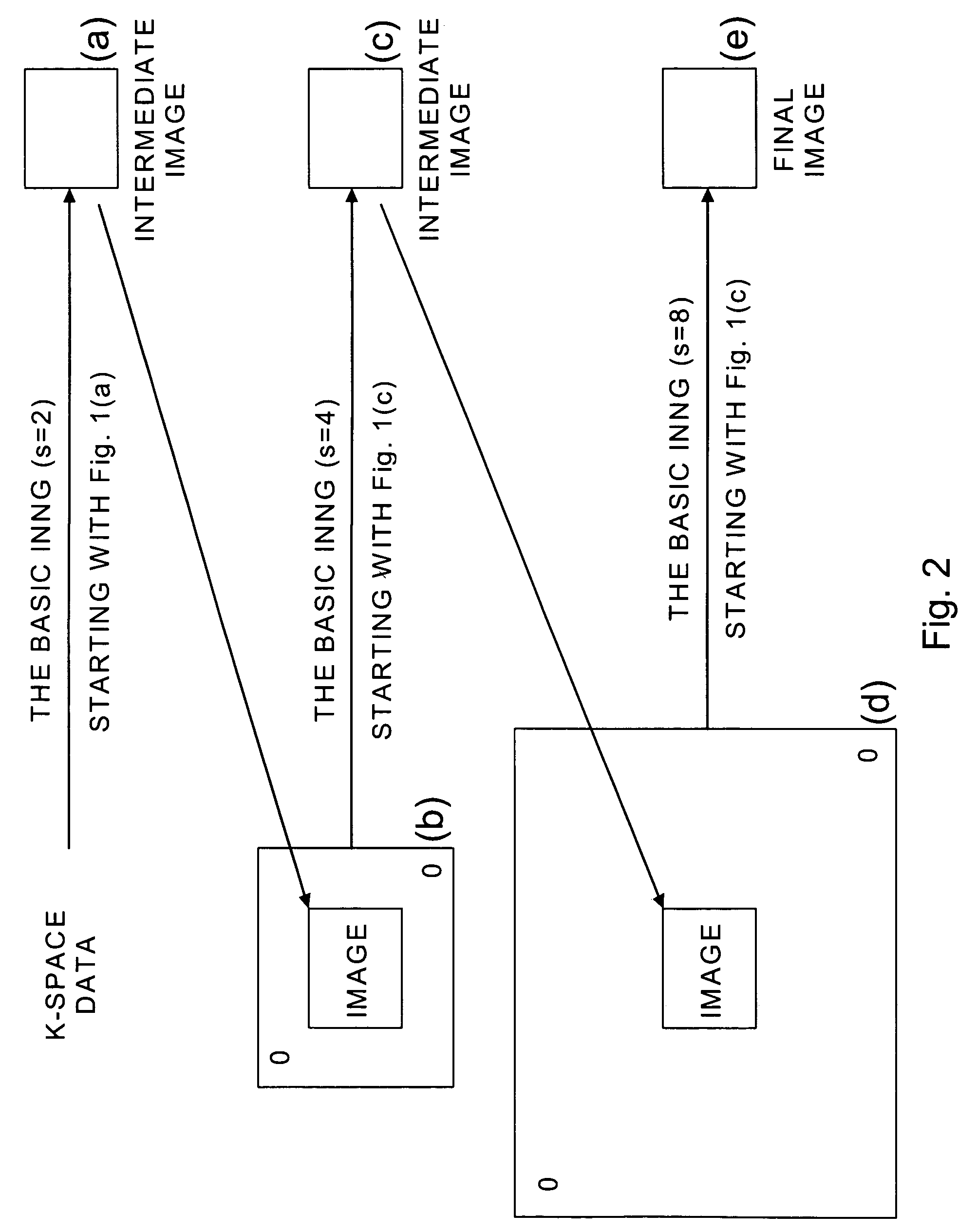Efficient method for MR image reconstruction using coil sensitivity encoding
a sensitivity encoding and efficient technology, applied in the field of magnetic resonance imaging, can solve the problems of inability to accurately sample kspace data, and inability to achieve the effect of sensitivity encoding,
- Summary
- Abstract
- Description
- Claims
- Application Information
AI Technical Summary
Benefits of technology
Problems solved by technology
Method used
Image
Examples
Embodiment Construction
[0019]The methods described herein are directed, inter alia, to efficient reconstruction of high-quality MR images. In particular, the methods described herein, taking into account sensitivity profiles of coils used for MR data acquisition, can be applied to non-rectilinearly sampled data and spiral MRI sampling schemes.
[0020]In one exemplary practice, an approach for optimal reconstruction using rescaled matrices from non-uniformly sampled k-space data is described. Non-rectilinear data acquisition methods have advantages over rectilinear data sampling schemes and hence are often performed in magnetic resonance imaging (MRI). For example, projection reconstruction, i.e., radial trajectories, shows reduced motion artifacts, and spiral trajectories are insensitive to flow artifacts. Image reconstruction from non-rectilinearly sampled data is not simple, because 2D-Inverse Fourier Transform (IFT) cannot be directly performed on the acquired k-space data set. K-space gridding is common...
PUM
 Login to View More
Login to View More Abstract
Description
Claims
Application Information
 Login to View More
Login to View More - R&D
- Intellectual Property
- Life Sciences
- Materials
- Tech Scout
- Unparalleled Data Quality
- Higher Quality Content
- 60% Fewer Hallucinations
Browse by: Latest US Patents, China's latest patents, Technical Efficacy Thesaurus, Application Domain, Technology Topic, Popular Technical Reports.
© 2025 PatSnap. All rights reserved.Legal|Privacy policy|Modern Slavery Act Transparency Statement|Sitemap|About US| Contact US: help@patsnap.com



